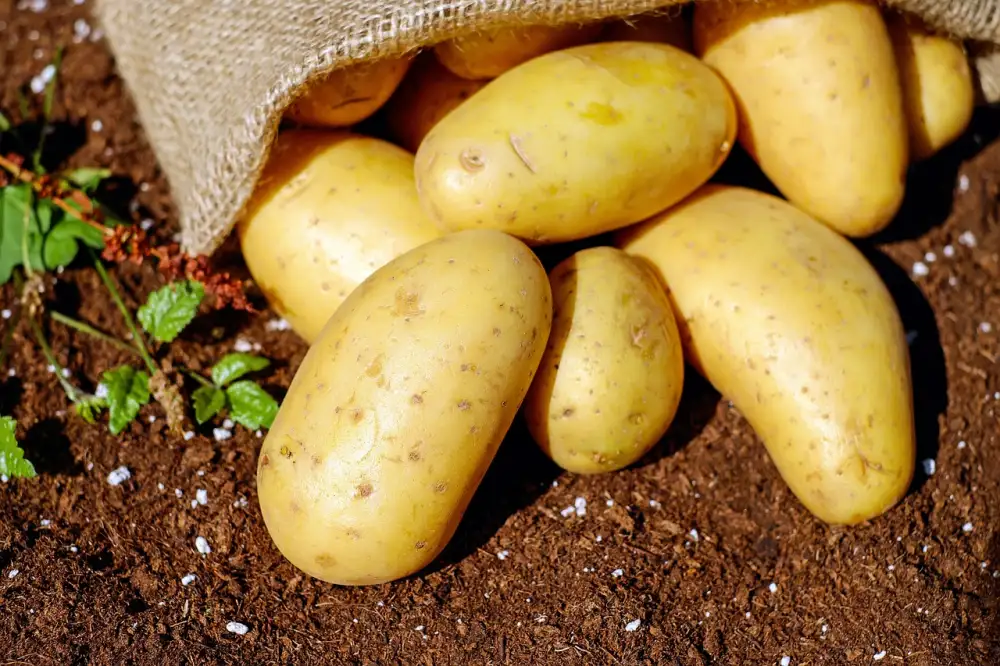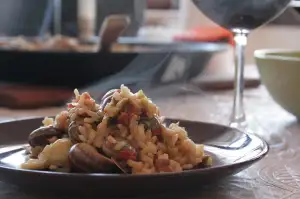Ultimate Guide to Perfect Jacket Potatoes Every Time

Choosing the best potatoes
When it comes to jacket potatoes, not all spuds are created equal. The right potato can make all the difference between a fluffy, flavorful delight and a dry, disappointing dud.
Russet potatoes, also known as Idaho potatoes, are the gold standard for jacket potatoes. Their thick, rough skin and high-starch content make them ideal for baking. The skin crisps up beautifully in the oven, while the fluffy interior soaks up all the delicious toppings you can throw at it.
Yukon Gold potatoes, with their naturally buttery flavor and creamy texture, are another excellent choice. They have thinner skins than Russets, so they might not crisp up quite as much, but they more than make up for it with their rich, earthy taste.
Red potatoes, while delicious in salads and stews, are not the best choice for jacket potatoes. Their waxy texture and low starch content mean they tend to hold their shape after baking, resulting in a denser, less fluffy potato.
When selecting your potatoes, look for firm, smooth specimens free from blemishes or soft spots. Avoid any potatoes with sprouts, as this indicates they are past their prime. Store your potatoes in a cool, dark, and well-ventilated place, but never in the refrigerator. The cold temperature can convert the potato's starch to sugar, resulting in an undesirable sweetness when baked.
Prepping for perfect fluffiness
Achieving that coveted, cloud-like interior in your jacket potato is all about understanding the science of starch. Potatoes contain two types: amylose and amylopectin. Amylose creates a gel when cooked, resulting in a denser texture. Amylopectin, on the other hand, creates a fluffier texture. The key is to break down the amylose while encouraging the amylopectin to do its thing. Start by choosing the right potato. Russet or Idaho potatoes are ideal for baking due to their high starch content and dry, fluffy texture. Avoid waxy potatoes like red or new potatoes, as they tend to hold their shape and won't achieve the desired fluffiness. Once you've got your potatoes, give them a good scrub and pat them dry. Pricking the potatoes all over with a fork is crucial. This allows steam to escape during baking, preventing them from exploding in your oven. Rubbing the potato skins with a bit of olive oil or melted butter adds flavor and helps create a crispy exterior. Don't wrap your potatoes in foil. While it might seem like it would keep them moist, it actually steams them, resulting in a soggy skin. Baking your potatoes directly on the oven rack allows for even heat circulation, promoting optimal crispiness. For ultimate fluffiness, bake at a high temperature, around 400°F (200°C), for about an hour, or until a fork easily pierces the center. Once baked, resist the urge to immediately dig in. Allowing the potatoes to rest for a few minutes before serving gives the steam a chance to redistribute, ensuring a fluffy interior. Give them a gentle squeeze to test for doneness. They should feel soft and yielding. Now, with a sharp knife, cut a cross into the top of each potato and gently push the sides inwards to fluff up the insides. Your perfectly prepped jacket potato is now ready for your favorite toppings.
Oil and seasoning secrets
Choosing the right oil is key for crispy potato skins. Olive oil adds a lovely flavor, but for ultimate crispiness, go for vegetable oil or duck/goose fat. Don't drown the potatoes in oil, just a light rub is enough.
Once you've rubbed the oil, it's time to season. Salt is a must, enhancing the potato's natural flavor. But don't stop there! Get creative with your seasonings:
Classics: Black pepper, garlic powder, paprika.
Spicy: Chili powder, cayenne pepper, smoked paprika.
Herby: Rosemary, thyme, oregano.
Remember, you can always add more seasoning after baking, so don't be afraid to experiment!
Baking for crispy skin
Achieving that irresistible crispy skin is the holy grail of jacket potato perfection. It's all about the prep. Start by washing your potatoes thoroughly and pat them completely dry. Moisture is the enemy of crispiness! Next, prick the potatoes all over with a fork. This allows steam to escape during baking, preventing a soggy interior. Don't underestimate the power of fat. Rub the potatoes with olive oil, goose fat, or even lard for ultimate indulgence. The fat helps to crisp the skin and adds a wonderful richness. Speaking of richness, consider adding salt. A generous sprinkle of coarse sea salt not only enhances flavor but also draws out moisture, contributing to that coveted crunch. Now, for the baking itself. A high oven temperature is key. Aim for around 400-425°F (200-220°C). Place the potatoes directly on the oven rack to ensure even heat circulation. For extra crispiness, use a baking stone or simply place a baking sheet on the rack below to catch any drips. Baking time will vary depending on the size of your potatoes, but expect around 60-90 minutes. You'll know they're done when the skin is golden brown and crispy, and the flesh yields easily to a gentle squeeze. For an extra-special touch, try these pro tips: Once baked, gently rub the potato skin with a knob of butter for added richness and shine. For an extra-crispy finish, crank up the oven to its highest setting for the last 5-10 minutes of baking. Experiment with different seasonings like black pepper, paprika, or garlic powder to create your signature flavor. Remember, achieving jacket potato perfection takes practice. Don't be afraid to experiment and adjust techniques to suit your taste. With a little patience and these tips, you'll be well on your way to crispy, fluffy jacket potato heaven!
Checking for doneness
There are a few ways to tell if your jacket potato is perfectly cooked. Gently squeeze the potato with an oven mitt or tea towel – it should feel soft and give slightly. Don’t squeeze too hard or the potato might burst! You can also insert a metal skewer or a thin-bladed knife into the thickest part of the potato. If it slides in easily with little resistance, your potato is ready. For a more precise check, use an instant-read thermometer. Insert the thermometer into the center of the potato – it should register 210°F (99°C) when fully cooked. Remember, cooking times may vary depending on the size of your potatoes and your oven, so always check for doneness before serving.
Creative topping ideas
A perfectly baked potato is a blank canvas for culinary creativity. Here are some topping ideas to elevate your jacket potato game:
Classic Combos:
Sour cream and chives: Tangy, fresh, and simple.
Chili and cheese: Hearty, cheesy, and satisfying.
Tuna mayo salad: A light and refreshing option.
Baked beans and cheese: A family favorite.
Gourmet Delights:
Smoked salmon and cream cheese: A touch of elegance.
Brie, cranberry chutney, and walnuts: Sweet, savory, and sophisticated.
Caramelized onions, goat cheese, and balsamic glaze: Rich, tangy, and bursting with flavor.
Pulled pork, coleslaw, and barbecue sauce: A Southern-inspired feast.
Veggie Ventures:
Roasted vegetables and hummus: Healthy, flavorful, and colorful.
Spiced chickpea curry: A plant-based explosion of flavor.
Black bean salsa and guacamole: Fresh, zesty, and satisfying.
Sautéed mushrooms, spinach, and feta cheese: A Mediterranean twist.
Beyond the Ordinary:
Breakfast potatoes: Top with a fried egg, bacon, and cheese for a hearty start to the day.
Pizza potatoes: Load up with marinara sauce, mozzarella cheese, and your favorite pizza toppings.
Taco potatoes: Fill with seasoned ground beef, salsa, sour cream, and guacamole.
Shepherd's pie potatoes: Top with a layer of seasoned ground lamb and a cheesy mashed potato crust.
Don't be afraid to experiment and create your own signature jacket potato creations!
Serving and enjoying!
Once your potatoes are cooked to fluffy perfection, it’s time for the best part – digging in! Cut a cross into the top of your potato, being careful of the steam. Gently push the sides in to fluff up the inside. Now, let your creativity run wild with toppings!
Classics like a knob of butter, grated cheddar cheese, sour cream, and chives are always a hit. For a heartier meal, chili, pulled pork, or even baked beans make fantastic additions. Don’t be afraid to experiment with different flavor combinations! Roasted vegetables, pesto, crumbled feta cheese, or a dollop of guacamole can add a gourmet touch.
Remember, the key to a truly great jacket potato experience lies not only in the cooking but also in the joy of customizing it to your taste. So, gather your favorite toppings, invite some friends and family, and enjoy the simple pleasure of a perfectly baked potato.
Published: 02. 07. 2024
Category: Food



